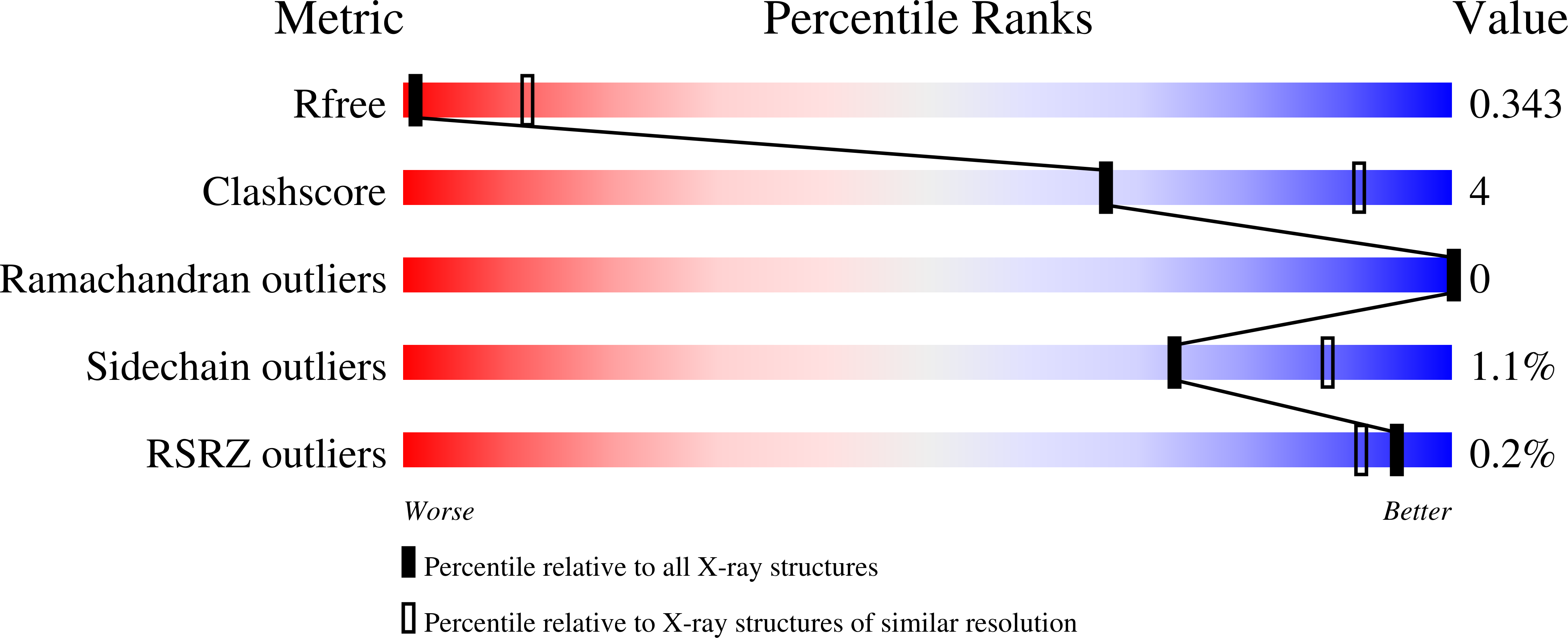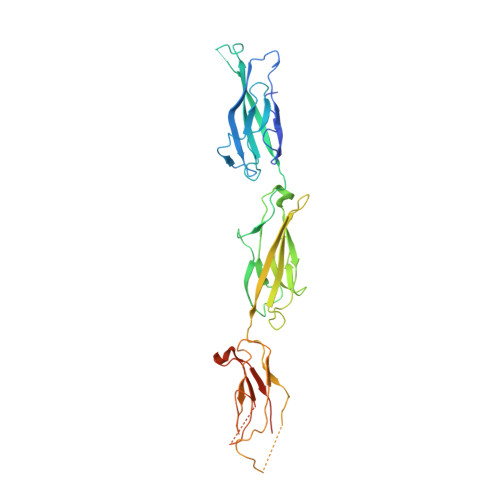Zooming in on Cadherin-23: Structural Diversity and Potential Mechanisms of Inherited Deafness.
Jaiganesh, A., De-la-Torre, P., Patel, A.A., Termine, D.J., Velez-Cortes, F., Chen, C., Sotomayor, M.(2018) Structure 26: 1210
- PubMed: 30033219
- DOI: https://doi.org/10.1016/j.str.2018.06.003
- Primary Citation of Related Structures:
5I8D, 5TFK, 5TFL, 5TFM, 5ULU, 5UN2, 5UZ8, 5VH2, 5VT8, 5VVM, 5W4T, 5WJ8, 5WJM - PubMed Abstract:
Cadherin-23 (CDH23) is an essential component of hair-cell tip links, fine filaments that mediate inner-ear mechanotransduction. The extracellular domain of CDH23 forms about three-fourths of the tip link with 27 extracellular cadherin (EC) repeats that are structurally similar but not identical to each other. Calcium (Ca 2+ ) coordination at the EC linker regions is key for tip-link elasticity and function. There are ∼116 sites in CDH23 affected by deafness-causing mutations, many of which alter conserved Ca 2+ -binding residues. Here we present crystal structures showing 18 CDH23 EC repeats, including the most and least conserved, a fragment carrying disease mutations, and EC repeats with non-canonical Ca 2+ -binding motif sequences and unusual secondary structure. Complementary experiments show deafness mutations' effects on stability and affinity for Ca 2+ . Additionally, a model of nine contiguous CDH23 EC repeats reveals helicity and potential parallel dimerization faces. Overall, our studies provide detailed structural insight into CDH23 function in mechanotransduction.
Organizational Affiliation:
Department of Chemistry and Biochemistry, The Ohio State University, 484 West 12th Avenue, Columbus, OH 43210, USA; Biophysics Graduate Program, The Ohio State University, Columbus, OH 43210, USA.















